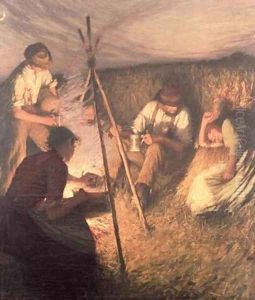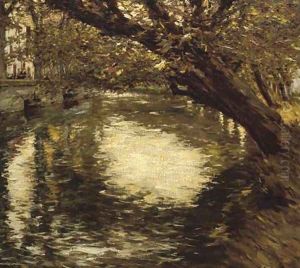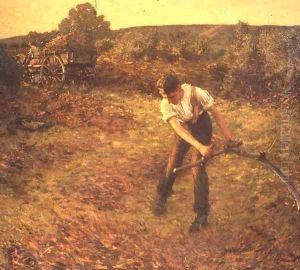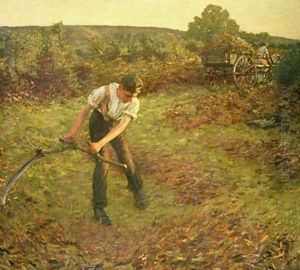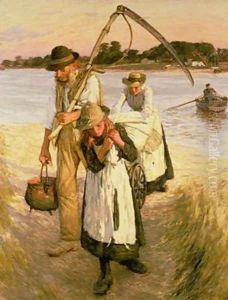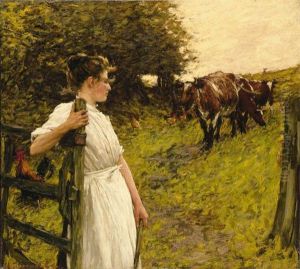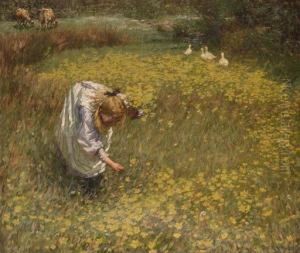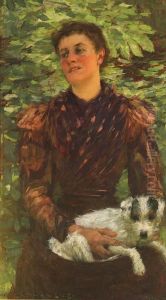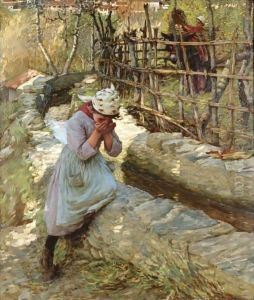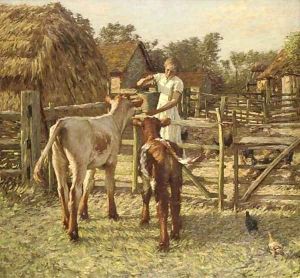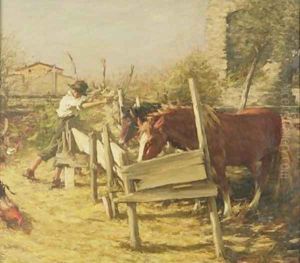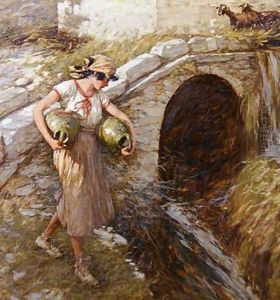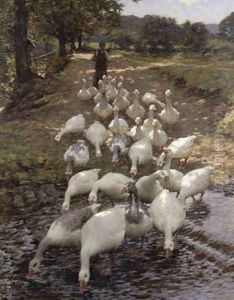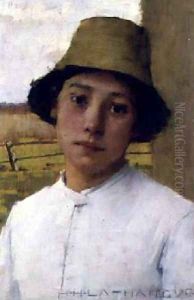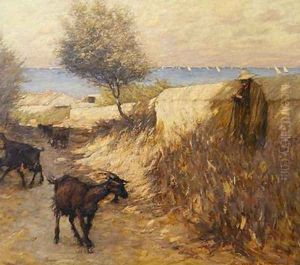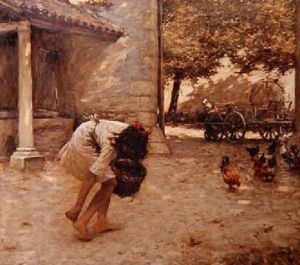Henry Herbert La Thangue Paintings
Henry Herbert La Thangue was a British painter, born in Croydon, Surrey, in 1859. He showed an early talent for art and was enrolled at the Lambeth School of Art at the young age of thirteen. He later attended the Royal Academy Schools where he won a silver medal for drawing, and subsequently a gold medal for a painting which entitled him to a three-year scholarship at the prestigious École des Beaux-Arts in Paris.
In Paris, La Thangue was heavily influenced by the plein-air painters of the Barbizon School and the Impressionists, which led him to adopt their practice of painting landscapes and rural scenes directly from nature. After his time in France, La Thangue returned to England and settled in the Sussex village of Graffham. His work from this period often focused on the English countryside and agricultural labor, depicting scenes of farm workers and rural life with an emphasis on the changing seasons and the effects of light.
La Thangue's technique was characterized by his use of impasto and a vibrant palette, which often led to comparisons with his French contemporaries. Despite this, he struggled to gain widespread recognition in Britain, which at the time favored more traditional and conservative styles. His work did, however, receive critical acclaim in international exhibitions, and he was awarded medals at the Paris Salon and the Exposition Universelle.
Throughout his career, La Thangue was an advocate for naturalism in art, and he was a founding member of the New English Art Club in 1886, which aimed to provide an alternative platform for artists outside the Royal Academy. His commitment to naturalism and his plein-air method remained steadfast, even as artistic trends shifted towards Modernism in the early 20th century.
La Thangue's later years saw a decline in his popularity, and he struggled with financial difficulties and declining health. In 1929, Henry Herbert La Thangue died in Bosham, West Sussex. Despite the ebb and flow of his reputation during his lifetime, La Thangue's work has been reevaluated in recent years, and he is now recognized for his contributions to British Impressionism and his dedication to capturing the essence of rural English life.
